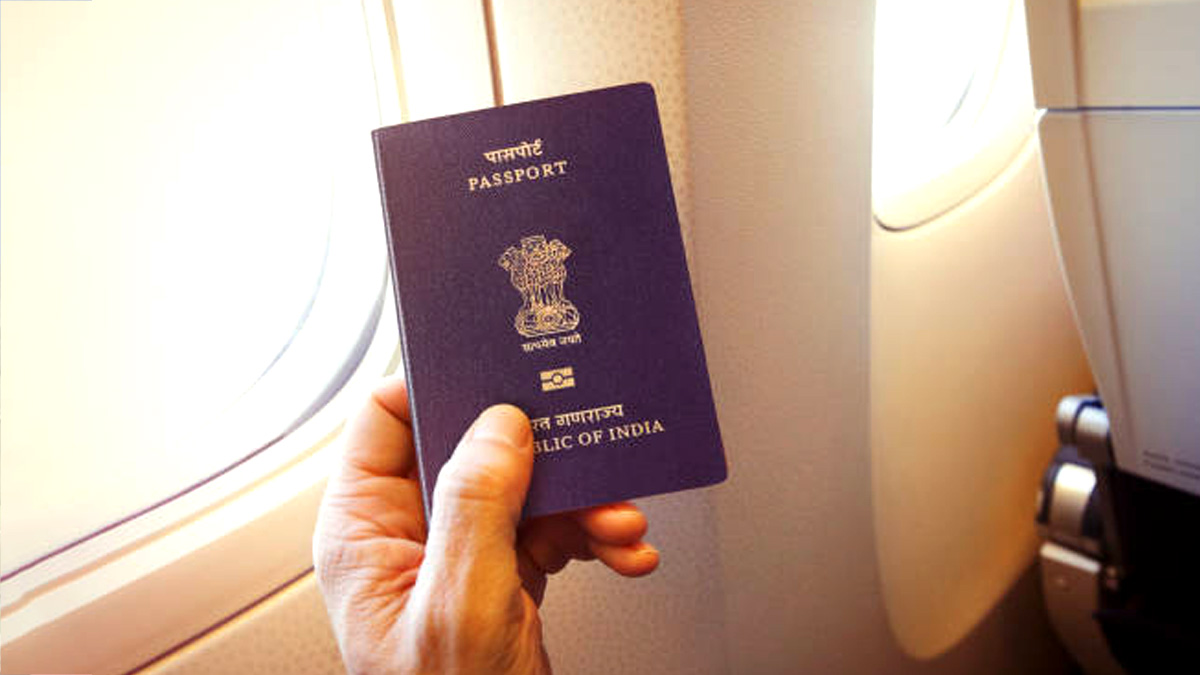From smartphones to smart homes, technology is revolutionizing every part of our lives—and now, it’s transforming how we travel. In a major step toward enhancing security and streamlining travel experiences, the Ministry of External Affairs (MEA) has rolled out e-Passports under the Passport Seva Programme (PSP) Version 2.0, officially announced on April 1, 2024. This move marks a significant leap in modernizing India’s identity infrastructure.
In this detailed guide, we’ll cover what an e-passport is, how it’s different from a traditional passport, how to apply, the benefits, and more.

What Is an E-Passport?
An e-Passport is a next-generation passport that merges the standard passport booklet with embedded electronic technology. It features a Radio Frequency Identification (RFID) chip and an antenna that stores the passport holder’s personal and biometric data.
You can easily recognize an e-passport by the small gold-colored chip symbol printed just below the word “Passport” on the front cover.
What Information Is Stored in an E-Passport?
The embedded RFID chip stores:
-
Personal details (Name, DOB, Passport number)
-
Digitally signed biometric data (Digital photograph and fingerprints)
-
Signature of the passport holder
-
Nationality and date of issue/expiry
The digital information ensures secure identity verification and protects against fraud.
Key Benefits of E-Passports
1. Enhanced Security and Data Protection
The e-Passport features Public Key Infrastructure (PKI), a global standard that encrypts and authenticates the data stored in the chip. This advanced encryption ensures:
-
Data integrity
-
Protection from tampering
-
Strong defense against identity theft and counterfeiting
2. Faster Immigration and Border Control
With e-passports, travelers can use automated e-gates at airports, drastically reducing wait times at immigration checkpoints. The data is instantly read by machines, making border control faster and more accurate.
3. Streamlined Verification Processes
Authorities can quickly access and verify passenger data, minimizing manual errors and enhancing efficiency at entry/exit points.
4. Compliance with International Standards
Indian e-passports are designed to align with ICAO (International Civil Aviation Organization) standards, ensuring global acceptance and interoperability.
How Does an E-Passport Differ from a Traditional Passport?
| Feature | E-Passport | Traditional Passport |
|---|---|---|
| RFID Chip | Yes | No |
| Biometric Data | Stored digitally in chip | Not stored electronically |
| Symbol | Gold chip symbol on cover | No such symbol |
| Security | Strong digital encryption | Standard paper-based security |
| Immigration | Supports automated gates | Requires manual checks |
| Identity Verification | More accurate, tech-enabled | Manual and time-consuming |
Step-by-Step Guide: How to Apply for an E-Passport in India
Step 1: Visit the Passport Seva Portal
Go to the official Passport Seva website.
Step 2: Register or Log In
-
New users: Click on “Register Now” and complete the sign-up.
-
Existing users: Log in using your credentials.
Step 3: Select Passport Application
Click on “Apply for Fresh Passport/Re-issue of Passport.”
Step 4: Fill Out the Application Form
Enter accurate personal information such as:
-
Name
-
Date of birth
-
Address
-
Contact details
Submit the form online.
Step 5: Schedule an Appointment
Book a slot at your nearest Passport Seva Kendra (PSK) or Regional Passport Office (RPO).
Step 6: Biometric Data Collection
During your appointment, your digital photograph and fingerprints will be collected.
Where Are E-Passports Currently Being Issued?
As of now, e-passports are being issued in the following cities:
-
Nagpur
-
Bhubaneswar
-
Jammu
-
Goa
-
Shimla
-
Raipur
-
Amritsar
-
Jaipur
-
Chennai
-
Hyderabad
-
Surat
-
Ranchi
The Indian government plans to expand issuance to all Passport Seva Kendras nationwide by mid-2025.
Do You Need to Replace Your Current Passport with an E-Passport?
No, it is not mandatory to replace your existing passport. All currently valid passports will remain usable until their expiry date. However, if you apply for a reissue or fresh passport at a center equipped with e-passport facilities, you’ll automatically receive the e-passport.
Is the E-Passport Safe to Use?
Absolutely. With encrypted chips and internationally accepted protocols like PKI and digital signatures, e-passports offer robust data security and reduced vulnerability to identity theft or tampering.
Future of E-Passports in India
By mid-2025, e-passports are expected to become the default standard for all Indian citizens. With the gradual expansion of supporting infrastructure and digitization efforts, the government aims to modernize India’s identity documentation systems and improve the travel experience for millions.
Frequently Asked Questions:
1. What is the difference between a passport and an e-passport?
An e-passport contains an RFID chip with biometric data, while a traditional passport includes only printed personal information.
2. Is an e-passport mandatory for all Indian citizens?
No, it is not mandatory. Existing passports remain valid until their expiration. E-passports are issued based on the applicant’s location and availability.
3. Can I travel internationally with an e-passport?
Yes, e-passports comply with ICAO standards and are accepted internationally.
4. Is there an extra fee for an e-passport?
As of now, the fees remain the same as for traditional passports, but this may vary depending on future updates.
5. Will I get an e-passport automatically when I apply for a reissue?
Yes, if your local Passport Office has the infrastructure for e-passports, you’ll receive one by default.




